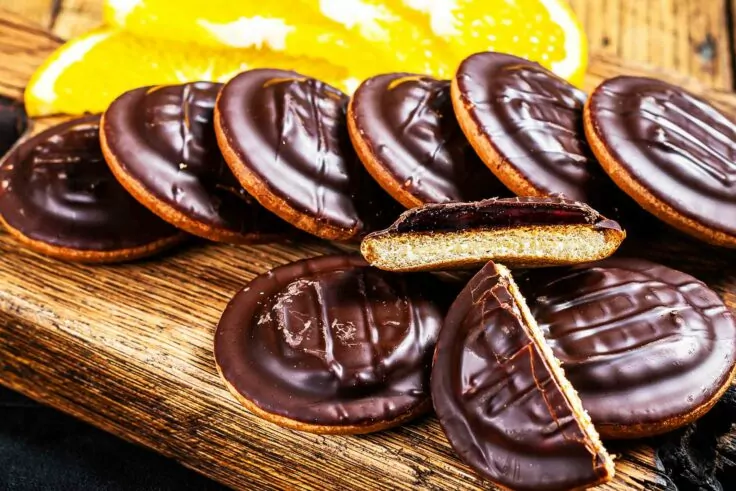If there’s one thing that our region has in common with the United Kingdom, it is the shared importance for tea time. Considered a cherished pastime in our daily routines as much as it is in theirs, the ceremony known as afternoon tea usually marks a much-needed pause in our hectic lives, offering a sense of leisure by chatting over a timeless tradition.
Despite the similarity in practice, discrepancies can be still found in how we savor the moment. Amounts of sugar in each mug aside, the ways in which our tea is served also differ. On our side, tea can either be enjoyed alone or complemented with a handful of sweet delicacies, while Brits tend to enhance their experience with a variety of treats, including savory snacks and low-calorie bites ranging from biscuits to sponge-cakes and short-breads. But one confection in particular has managed to establish itself as a quintessential companion to this innocent pastime: Jaffa cakes, which as the name suggests, happen to carry roots from our region.
For those that may be unfamiliar with one of the United Kingdom’s best-selling nosh, Jaffa Cakes are a three-layered biscuit made of a Genoise sponge base, covered in orange-flavored jam, and coated in chocolate. The famed recipe, which hit shelves in 1927, has, since its inception, become a beloved icon in British households, often served during tea time and social gatherings.
And even with the name of the treat providing a clear clue to its origin, many remain unaware of its roots. Although the mouth-watering recipe was invented in England, its popularity can largely be traced back to the Middle East, more precisely to Palestine. Many would argue that what makes Jaffa Cakes so tasty is the zesty jam layered in between the chocolate and the Genoise sponge, a key ingredient that was initially sourced from the coastal city of Yaffa.
The back-then novel type of oranges, also known as shamouti, were developed by local Arab farmers in the mid-19th century and quickly began making a name for themselves as a result of their sweet and refined flavor. Rapidly exported all over the world, they instantly became a sensation in London, eventually influencing the creation of the Jaffa Cake as we know it today.
The delicious treat, which is attributed to British snack food brand McVitie and Price, never saw its name or recipe trademarked, which has since led to the famous snack being reproduced to the identical taste and appearance by various other brands. In hindsight, perhaps Jaffa Cakes would not have enjoyed such levels of clear-cut success had it been legally protected.
Since, the delicious orangey-chocolate snacks have been derived in several different flavors, including lemon-and-lime, strawberry, and blackcurrant. They have also seen their fame extend beyond English borders, including in France where they were commercialized by a leading brand of biscuits under the name Pim’s, in Poland by E. Wendel as Delicje Szampańskie, or also as Čoko Piškoty in Slovakia by traditional chocolate brand Figaro.
Undeniably a hit in major parts of the world— except perhaps for Palestine— it’s time to give credit to the Levantine State, which is currently being carpet bombed by Occupying Forces, for one of the Western World’s favorite tea time treats.









